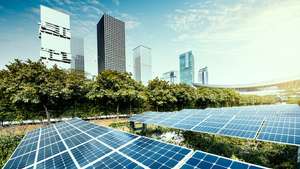
Pollution of atmospheric air above the city highways.
 Olena Voloshkina 1 Doctor of Science, Professor
Olena Voloshkina 1 Doctor of Science, Professor Rostyslav Sipakov 1* Ph.D. student
Rostyslav Sipakov 1* Ph.D. student Dmytro Varavin 1 Ph.D. student
Dmytro Varavin 1 Ph.D. student Yevheniia Anpilova 2 Senior Research Scientist.
Yevheniia Anpilova 2 Senior Research Scientist. Tetiana Kryvomaz 1 Doctor of Science, Professor.
Tetiana Kryvomaz 1 Doctor of Science, Professor. Julia Bereznitska 1 Ph.D., Associate Professor.
Julia Bereznitska 1 Ph.D., Associate Professor.
1 Kyiv National University of Construction and Architecture, Vozduhoflotsky Avenue 31, Kyiv, 03680, Ukraine;
2 Institute of Telecommunications and Global Information Space, National Academy of Sciences of Ukraine, Chokolivsky Boulevard, 13, Kyiv, 03087, Ukraine;
Received: 10/20/2018, Accepted: 12/26/2018, Available online: 12/26/2018.
DOI: https://doi.org/10.32557/useful-2-4-2018-0002
HDL: https://hdl.handle.net/20.500.12334/85
*Corresponding author e-mail: sipakov.rv@knuba.edu.ua
Under a creative commons license. Volume 2, Issue 4, 2018, pages: 09-25.
Plagiarism was checked by Grammarly and STRIKEPLAGIARISM
Author Keywords: atmospheric air pollution, mathematic model, hydrocarbon emission, formaldehyde, pollution calculator.
Abstarct
The study is devoted to the estimation of pollution deposit caused by vehicles into the city to-tal greenhouse gases emissions and to the forecast of the secondary air pollution with formal-dehyde.
The present study contains mathematic model which allows getting the estimation of vehicles emission in the total amount of polluted atmospheric air.
The model consists of two intercon-nected parts: a dynamic and a kinetic one. The first part of the model is based on the Theory of Convective Jet and Thermals in the Atmosphere and allows to get the parameters of the contaminated air which is being formed over the highway. The Dynamic part of the model allows to get the total amount of hydrocarbons emission depending on the number of vehicles which is present at the same time on the highway. We also obtain the data on concentration of pollution and temperature increasing in the narrowest section of the thermal jet. The kinetic part of the model allows to determine the concentration of the secondary atmos-pheric air contamination with formaldehyde as a result of photochemical transformation of hydrocarbons which are the part of emission of internal combustion engine. The speed of the transformation reaction was determined by the Can't Hoff-Arrhenius deferential equation.
The given mathematical model was tested with the help of the system of regular observation over the polluted atmospheric air in Kyiv city. The comparison of the estimated value of for-maldehyde concentration and the observation data doesn't exceed 5 % above the maximum values. According to average monthly rates there is a false positive error (to + 20 % in the warmest months). Basing on the given model the calculator of concentration of pollution by vehicles was devel-oped. This calculator allows to obtain rapidly the values of formaldehyde concentration, de-pending on air temperature, solar radiation and number of vehicles on the highway. The amount of hydrocarbon emission from the vehicles, according the suggested model, allows to estimate the deposit of vehicles into the total amount of greenhouse gases of the city.
The ob-tained results could be useful in forming of ecological policy of the cities and in managerial decision making.
1. Introduction.
The constant population increasing with the uneven simultaneous geographical distribution of the population density lead to global increasing impact of the urbanized territories on environment. It was stated that big cities significantly affect air pollution even at large distances [1-6]. According to the preliminary estimation of the Global Report on Human Settlements UN-HABITAT, the deposit of the cities into the climate changes of the atmosphere can reach from 40 to 70 per cent of greenhouse gases (GHG) emission. The increased dependence on personal transport is making it to be the main reason of the GHG emission in most cities, especially in developing countries. There is a direct dependence between population well-being growth and the number of personal transports. According to the forecast of the Program UN-HABITAT on people settlements, the number of cars will increase, and until 2050 it will reach 2,6 billion, that is 50% if compared to 2011. To find out the role of cars emissions in big cities in contamination of the atmosphere on condition of global climate changes we should make a large-scale research with attraction of the regional municipality data. We need interdisciplinary integrated estimation tools for optimizing measures to reduce the impact of megacities on human health and the climate [5].
This study relates to the assessment of mutual influence of temperature increasing in megacities as a result of global climate changes and the level of contamination of the atmospheric air from vehicle emissions.
In the research which is described in this article, the authors considered the following points:
- the analysis of the monitoring data of a number of megacities showed that along with increasing of hydrocarbon emission from vehicles there is an increasing of the most powerful pollutant of the atmospheric air - formaldehyde (secondary pollution), the formation of which depends on meteoconditions of the given area [7-12];
- the formaldehyde pollution of the atmosphere is an indicator of photochemical smog formation in big cities of the world. As the confirmation of this fact there is the smog formation over the highways, which is observed on neutral atmospheric conditions as well as with high temperatures. For example, for big cities in Ukraine this index is 3-5 M.A.C of the given toxic substance in summer months [10-14].
According to these statements the authors suggest mathematical model which consists two parts, which, in turn, describe the dynamics and kinetics of the given process. The first part considers the amount of convective air contamination above the highways with particular concentration of the emitted hydrocarbon, the second one - is based on the known laws of chemical kinetics. The developed calculator based on the given model allows to define the amount of emitted hydrocarbons when inventing greenhouse gases on urbanized territories and the secondary pollution with formaldehyde in consequence of chemical transformation.
References
[1] Gerd, A., Folberth, Timothy, M., Butler, William, J., Collins, Steven, T., Rumbold (2015) Megacities and climate change- A brief overview. Environment Pollution. 203,235-242. DOI: https://doi.org/10.1016/j.envpol.2014.09.004
[2] Cities and Climate Change: Global Report on Human Settlements 2011 – ABRIDGED (ARABIC) https://www.taylorfrancis.com/books/9781849776936
[3] Demographia. World Urban Areas & Population Projections. 13th Annual Edition: 2017:04 http://www.demographia.com/db-worldua.pdf DOI: https://doi.org/10.2307/1533099
[4] David, D., Parrish, Hanwant, D., Singh, Luisa, Molina, Sasha, Madronich. (2011). Air quality progress in North American megacities: A review. Atmospheric Environment,45,7015-7025. DOI: https://doi.org/10.1016/j.atmosenv.2011.09.039
[5] Alexader, Baklanov, Luisa, T., Molina, Michael, Gauss (2016). Megacities, air quality and climate. Atmos-pheric Environment,126, 235-249. DOI: https://doi.org/10.1016/j.atmosenv.2015.11.059
[6] Miriam, E., Marlier, Amir, S., Jina, Miriam, E., Marlier, Patrick, L., Kinney, Ruth, S., DeFries. (2016). Ex-treme Air Pollution in Global Megacities. Curr Clim Change Rep.,2,15-27. DOI: https://doi.org/10.1007/s40641-016-0032-z
[7] John, H., Seinfeld, Spiros, N., Pandis. (1997). Atmospheric chemistry and physics. A Wiley-Interscience Publication, Printed in the USA, QC879.6. S45, -1356 P. DOI: https://doi.org/10.1063/1.882420
[8] Howard Brigman. Global air pollution, problems for the 1990s. (1992)., CBS Publishers & Distributors. - Р.261. DOI: https://doi.org/10.1016/0269-7491(93)90032-J
[9] Skubnevskaya GI, Dultseva G.G. Pollution of the atmosphere with formaldehyde: Analytical review / RAS. Sib otd. GPNTB, IKHK&G.- Novosibirsk, 1994.-70Р. DOI: https://doi.org/10.1016/S0021-8502(99)80079-2
[10] Polishchuk S.Z., Dotsenko L.V., Demidenko A.S. Estimation of the influence of meteorological factors on the state of atmospheric air pollution in the city of Dnipropetrovsk (on the example of formaldehyde) / Con-struction, materials science, machine building: Starodubsky Readings-2015, - P.266-270.
[11] Pryschepov O.F., Levytska O.S. Peculiarities of the dispersion of harmful substances of airborne vehicle emissions in the city / Scientific works of the Petro Mohyla Black Sea State University. Sir Technogenic safety. - 2009. -111, issue 98- pp.139-146. DOI: https://doi.org/10.25140/2410-9576-2018-1-1(13)-135-141
[12] SV.V., Trofimovich, O.S., Voloshkina, M.M., Fandikova, I.V., Klimova, N.E., Zhuravska. (2012). Monitor-ing of atmospheric air. Problems of modeling and forecasting. Prob. Scientific works "Ecological safety and nature management", KNUBA, ITGIP NANU, K., 10,102-120. DOI: https://www.doi.org/10.32557/dsua/20.500.12334/24
[13] Sipakov R.V Assessment and forecast for the creation of photochemical smog over transport overpasses in Kyiv/Sipakov R.V., Trofimovich V.V., Voloshkina O.S., Bereznitska Y.O.// Prob. Scientific works "Eco-logical safety and nature management", KNUBA, ITGIP NANU, K., 2018.-issue 25 p. 44-51. DOI: https://www.doi.org/10.32557/dsua/20.500.12334/24
[14] Misliuk O.O., Shaikin O.Y. Assessment of ecological safety of motor transport operation in the conditions of an industrial city / Bulletin of ZHDTU №3 (46), 2008.- P. 1-6. DOI: https://doi.org/10.30977/ETK.2225-2304.2017.29.0.30
[15] Aloyan A.E. Modeling of dynamics and kinetics of gas impurities and aerosols in the atmosphere. / Institute of Numerical Mathematics RAS. -M.: Nauka, 2008.-415 p. (in translation.). DOI: https://doi.org/10.1016/j.ecolmodel.2004.06.004
[16] Atmosphere protection from industrial pollutions: ed.S. Kalvert and G.M. Inglund. - M,1988. -760p. DOI: https://doi.org/10.1016/B978-0-444-89863-0.50018-X
[17] The level of atmospheric air pollution in Kyiv by formaldehyde / O.G. Shevchenko, M.I. Kulbida, S.I. Snizhko, L.S. Shcherbukha, N.O. Danilov // Ukrainian Hydrometeorological Journal, Odessa State Ecologi-cal University, 2014, # 14, - P. 2-22. DOI: http://doi.org/10.17721/1728-2721.2017.68.4
[18] Flagan, Richard C. and Seinfeld, John H. (1988) Fundamentals of Air Pollution Engineering. Prentice-Hall, Inc., Englewood CLiffs, NJ. ISBN 0-13-332537-7. - P.542. http://resolver.caltech.edu/CaltechBOOK:1988.001
[19] Manual on the control of atmospheric pollution / M.E. Berlyand, G.I. Sidorenko. - L.: Gidrometeoizdat, 1979.-448p. DOI: https://doi.org/10.1016/0004-6981(72)90134-5
[20] Т.S. Selegay.Formaldehyde pollution of the urban atmosphere and its dependence on meteorological factors / Т.S. Selegay, N.N. Filonenko, V.A. Shlychkov, A.A. Lezhenin, T.N. Lenkovskaya // Optics of the Atmos-phere and the Ocean, # 25 (5), Novosibirsk. 2013, - P. 422-426. DOI: https://doi.org/10.1134/S1024856015060159
[21] Antropov K.M. Mathematical models of pollution of atmospheric air of megacity and the industrial center by emissions of motor transport and industrial enterprises. The abstract for the Degree of Candidate of Sciences in Physics and Mathematics, specialty 05.13.18 – Mathematical modeling, numerical methods and program complexes. Ekaterinburg, 2012. – 24 p. (as a manuscript rights). DOI: https://doi.org/10.2174/9781608054831112010008
[22] Brigman, H. and Graham L (2003). Air pollution and meteorology in a small city: the case study of Newcas-tle, NSW, Australia, Fifth International Conference on Urban Climate, University of Lods, Po-land,September, 2003. DOI: https://doi.org/10.1016/B978-075067294-8/50018-X
[23] Rate constant for gas phase reactions of nitrate with a series of organics in the air at 298 _+ 1K/ R. Atkinson, C.N. Plum, W.P.L. Carter, et al.//J.Phys.Chem.-1984.-Yd88.- P.1210-1215. DOI: https://doi.org/10.1021/j150650a039
Please cite as: O.Voloshkina, R.Sipakov, D.Varavin, Y.Anpilova, T.Kryvomaz, J.Bereznitska “Pollution of atmospheric air above the city highways.” USEFUL online journal, vol. 2, no. 4, pp. 09–25, December 2018. DOI: https://doi.org/10.32557/useful-2-4-2018-0002








Comments